Getting a new dog is scary enough when it’s your first dog, but when you have an adult dog at home, it’s even more intimidating. What if your older dog should injure your puppy? Will your dog still love you if you get another dog?
Don’t worry. Another dog can be a great friend to your current dog, but it’s essential to take care in introducing a new puppy to your older dog. Here are 5 tips to set you up for success.
- Set specific areas for puppy's activities to help both dogs adjust.
- Allow dogs to smell each other first in a neutral area to acclimate.
- First face-to-face meeting of dogs should be on neutral ground.
- Watch for signs of aggression or fear during initial interactions.
- Use your older dog as a role model to help train the new puppy.
The information provided herein is for informational purposes only. Please refer to our disclaimer for more details..
Set Ground Rules for New Puppies
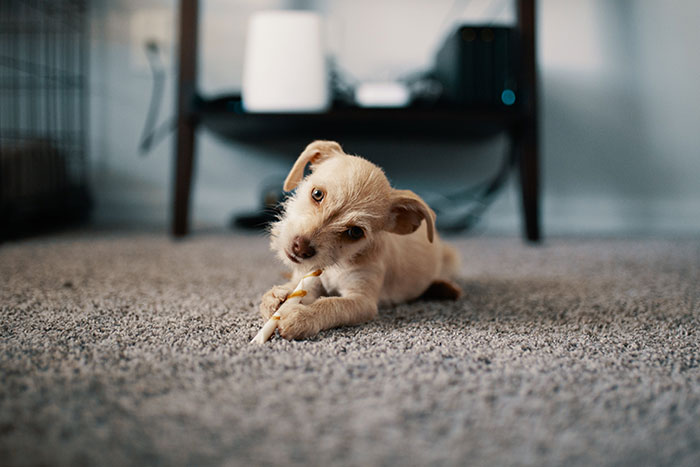
Image credit: Josh Sorenson
Preparing your home for the arrival of a puppy is more than setting up a sleeping area and play space. Establishing ground rules from the second puppy comes home sets the foundation for a healthy relationship between your dogs. Here’s what to cover in the rules for your new addition.
Designate Puppy Areas
Identify specific areas in your home for the puppy to eat, sleep, and play to create a structured environment for both dogs. If you plan to use a crate, begin crate training immediately.
Set Food and Toy Rules
One of the critical rules to establish right away is that the puppy is not allowed to take your other dog’s food or toys. This is crucial in preventing resource guarding and conflicts.
Each dog should have their own set of toys and separate feeding areas. They may be able to share as time passes but start with separate stuff at the beginning.
Playtime Etiquette
Teach your puppy that it’s not acceptable to jump on or bite your other dog unless they’re invited to play. Encourage gentle play and intervene when the puppy becomes too boisterous or bothers your older dog without being invited.
If you don’t teach your pup how to behave, your older dog will have to. They are likely to be severe and potentially harm the relationship or puppy.
Offer Sniffing Opportunities
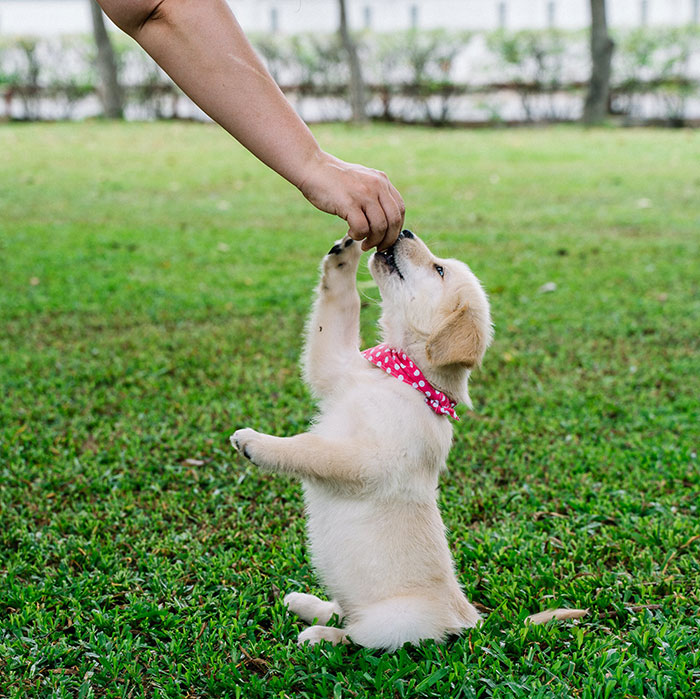
Image credit: Anna Tarazevich
Let the dogs smell each other before a direct visual encounter. This should be done in a neutral area, where both dogs feel less territorial. Use a visual barrier, such as a fence or a gate, where they can smell but not see each other.
This method allows each dog to become familiar with the other’s scent without the overstimulation of a face-to-face meeting. It also allows you to see how the dogs react to each other in a zero-stakes situation.
Once you bring the new puppy home, continue to use scent to introduce your new puppy to your dog. Allow the dogs to sniff each other under doors or through baby gates to investigate and become accustomed to the other’s scent without the pressure of direct interaction.
Meet on Neutral Ground
Image credit: JACLOU-DL
The first face-to-face meeting is a pivotal moment. Selecting neutral territory for this encounter is critical. A public park or an unfamiliar street makes territorial behavior in your existing dog less likely.
Before allowing the two dogs to meet directly, start with parallel walking. One person walks each dog, maintaining a safe distance between the two dogs.
Parallel walking is the next step after smelling to allow the dogs to become aware of each other’s presence without the pressure of direct interaction.
When it seems like both dogs are comfortable and exhibiting curious or calm behavior, you can gradually decrease the distance between them.
Avoid direct head-on approaches, as these can be perceived as confrontational by dogs. Instead, allow the older dog to approach the younger one from the side or back.
Watch for Negative Reactions
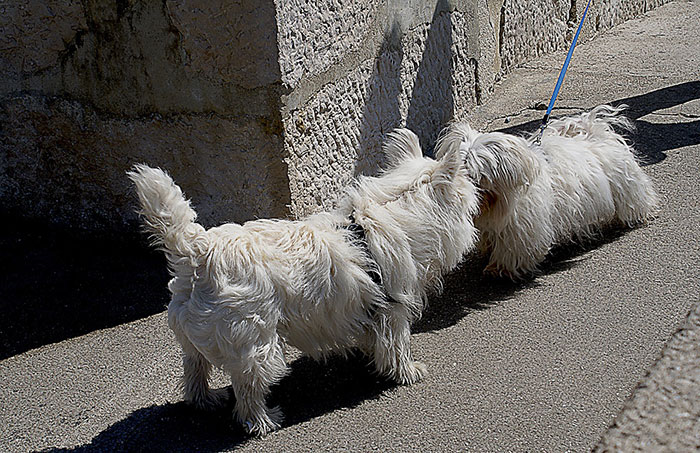
Image credit: pxhere.com
Observing both dogs’ body language and reactions during their initial meetings is crucial. If you’re not confident in dog body language, it’s a good idea to ask a trainer or other experienced dog handler to accompany you. Here are the basics of what to look out for:
- Growling or Snarling: This is a clear sign of fear or aggression.
- Cowering or Tucking the Tail: Indicates fear or anxiety.
- Avoidance: Turning away or trying to leave the situation persistently. Some avoidance is just polite.
- Stiff Body Posture: A tense body suggests discomfort or aggression and often indicates an escalation in aggression may occur.
- Raised Hackles: The hair on the back standing up can be a sign of arousal, either excitement or aggression.
- Baring Teeth: A warning sign indicating the dog feels threatened.
- Lip Licking or Yawning: These can be signs of stress in dogs, although they may also be done to appease or disarm.
- Excessive Panting or Drooling: This can indicate stress, especially if the dog is not overheated or thirsty.
- Staring Intently: A fixed stare can signify challenge or aggression.
Remember that reactions from both dogs, especially the puppy, may vary significantly throughout the interaction. Puppies are still learning social cues and might not always read or respond to the older dog’s signals correctly.
An older dog might be annoyed by playful advances and correct the puppy, then go back to meeting them or playing with them. Don’t be discouraged if you observe signs of negativity, but take it seriously. You don’t want a scuffle right at the beginning of the relationship.
Managing Negative Reactions:
- Distance: If you notice any negative reactions, increase the distance between the dogs and keep walking to reduce tension and prevent escalation into aggression.
- Positive Reinforcement: Use treats and praise to reinforce calm and non-aggressive behaviors in both dogs to build a positive association with each other.
- Patience and Persistence: Keep interactions short and positive. If the meetings don’t go well, don’t force it. Instead, try again later after more scent familiarization.
Your Dog is Your Puppy’s Best Teacher
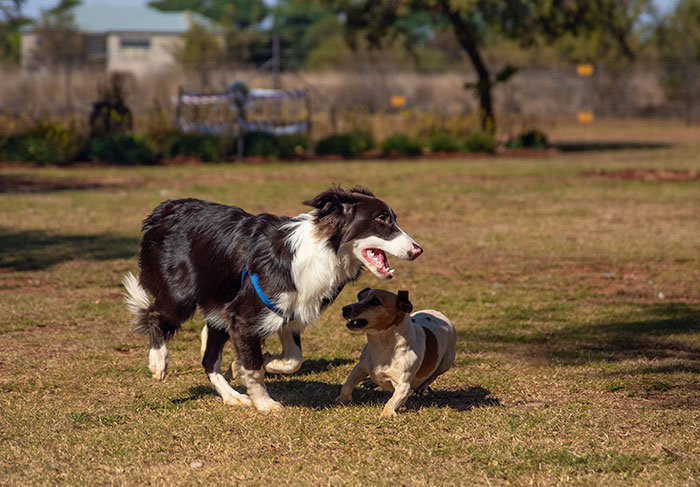
Image credit: Magda Ehlers
Puppies naturally look to older dogs for guidance and mimic their behaviors. Your senior dog is a key influence in their learning and socialization. Getting your dog to help will speed up the puppy’s training, as well as build the bond between your dogs.
Here are just a few ways your dog can help you train your pup:
- House Training: When your older dog goes potty, make sure the puppy watches them go and watches you give them a reward. The puppy will quickly learn to go potty outside when given an example.
- Basic Commands: Commands like ‘sit’, ‘stay’, or ‘come’ are easy to understand when the puppy observes an older dog responding to them.
- Walking on a Leash: Observing an older dog calmly walking on a leash and resisting impulses sets an example for a puppy.
Problem-Solving
How Do You Get an Older Dog to Accept a Puppy?
It can take some time for a dog and a puppy to get along. Puppies can be annoying, and your dog already has expectations about their household, relationship with you, and right not to be jumped on all day by a rowdy puppy.
Separate the dogs until you see no sign of aggression or fear in either dog. You can introduce a puppy to an older dog slowly and safely using baby gates, parallel walks, and other ways to enable them to acclimate slowly.
Positive reinforcement is key; reward the older dog and the new puppy for calm and friendly behavior. Keep initial interactions short and pleasant. It’s essential to give the dog already in the house plenty of attention and affection to reassure them of their place in the family.
How Long Does It Take for a Dog to Get Used to a New Puppy?
Some dogs react to a puppy as though you got it just for them, and it’s better than any toy you ever brought home. Some dogs give you that, “You’re dead to me.” look. That’s okay.
It’s normal for there to be some adjustment needed when a new dog enters the home territory of the old. Some may adjust within days (or even minutes), while others might take weeks or longer. Some dogs may never accept another dog in their home, although it’s uncommon.
Factors like the older dog’s temperament, past experiences, and the puppy’s behavior all play a role. Be patient and let them adjust at their own pace. Consistent, positive interactions will gradually help build a bond between them. If there is significant aggression even over weeks, it is wise to consult with a trainer.
What Do I Do If My Dog Doesn’t Like My New Puppy?
Don’t take aggression lightly. Dogs can and do seriously hurt puppies they don’t want in their home. Even if the older dog has always done well with other dogs–don’t risk it.
Give the older dog space and don’t let the puppy approach it. Try parallel activities where the older dog and the new pup engage in separate activities in the same area, like chewing on a toy on either side of a baby gate. This helps them get used to each other’s presence without direct confrontation.
If issues persist, consider seeking advice from a professional trainer or a behaviorist.
How Do I Stop My Old Dog from Being Jealous of My New Puppy?
According to research, dogs display jealousy when they see their owner paying attention to another dog. Some dogs are very prone to jealousy, while others don’t seem to mind sharing their people at all. To prevent jealousy, it’s crucial to ensure your dog doesn’t lose anything due to this new dog in their life.
Make time to spend as much time with your old dog as you used to. Balance attention to give both dogs all the love, training, and exercise they need. Reinforce positive behavior from your older dog when they are calm or gentle around the new puppy.
157views
Share on Facebook"How to Introduce a Puppy to an Older Dog: 5 Vet Tips" - Where are the "vet tips"? The article's author is not a vet. Advice and tips are fine, but do not misrepresent them as being from a "vet", when they are not.
These tips could be Coral's vet’s tips . She didn’t present them as her own. In any case, they are insightful and excellent.
Load More Replies..."How to Introduce a Puppy to an Older Dog: 5 Vet Tips" - Where are the "vet tips"? The article's author is not a vet. Advice and tips are fine, but do not misrepresent them as being from a "vet", when they are not.
These tips could be Coral's vet’s tips . She didn’t present them as her own. In any case, they are insightful and excellent.
Load More Replies...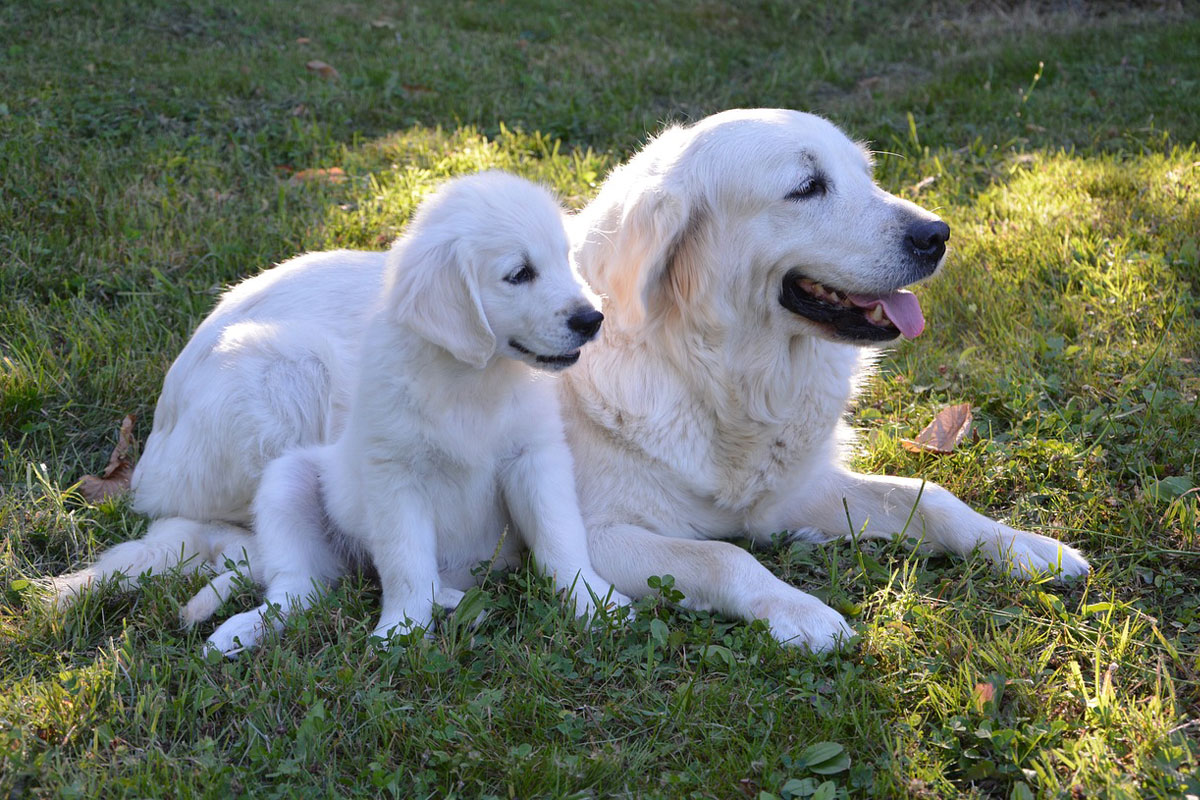
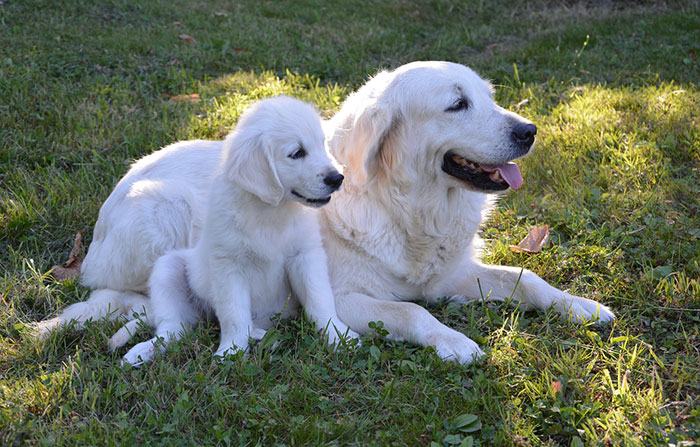
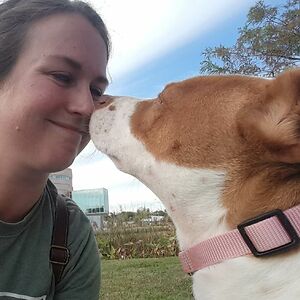


-3
3